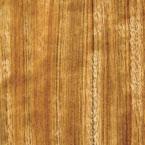Sponsored by: Columbia Forest Products: North America’s largest manufacturer of hardwood plywood and hardwood veneer.
An attractive wood and a good choice for furniture, cabinetry and flooring, paldao is not only popular in its native countries, but has attracted attention far from its range.
Rick Banas, vice president of Interwood Forest Products Veneer Inc., noted, “Paldao is becoming more available than ever before, and the same can be said for its uses. With the high international demand and popularity for American, European and Australian walnut, paldao is filling in some voids. Its wide range of growth from Southeast Asia, Philippines, Malaysia, Indonesia and into Papua New Guinea allow this species to be increasingly exploited.”
In addition to furniture and cabinetry, paldao is used for architectural projects, yachts, aircraft interiors, interior joinery and musical instruments. “It definitely is a species on the rise,” Banas said.
“In the past, these large logs were cut into small cants and carried out of the forests. Today logs are harvested in their entirety, which allows for large dimensioned veneers as well as lumber, making it ideal for architectural projects and many other uses. The color and grain can vary from tree to tree, but the material coming from each tree is fairly consistent as far as grain, color and figure type are concerned,” he added.
Doug Newhouse, owner of Newhouse Wood & Veneer, described paldao as brown, sometimes with irregular dark brown to black streaks. The logs, which can range in length from 8 feet to 10 feet, can yield from 2,000 to 20,000 board feet.
It is a large tree, reaching a height of 120 feet, with clear straight boles 65 to 80 feet in length above high buttresses, and trunk diameters of 7 to 8 feet.
Abundant Species
Custom designer and studio woodworker Thom Scott also is a fan of paldao and has used it in a variety of his own designs. Scott began as a graphic designer and got hooked on working with wood while working in a cabinet shop in summer during college. The owner of Thom Scott Studio in Westport, MA works with clients, interiors designers, architects and builders.
“I’m a wood junkie who loves to work with rare species. One of my first experiences with paldao was to turn it into flooring for my own home. It is a wonderful wood, a chameleon wood that goes with a wide range of other woods,” Scott said. “It’s not too dark, not too light — it has a lot of what I call in-between color and character and also chatoyance (having a changeable luster or color),” he added. While cost can be an issue with paldao, Scott said it currently is affordable as veneer “but quite expensive as lumber.”
Scott has used paldao in paneling, cabinetry, furniture and more and has teamed it with a variety of woods, such as zebrawood, walnut and ebony. He’s used paldao in paneling as a fireplace wall, bookmatched paldao veneer on architectural doors and cabinetry and used paldao veneer in paneling with a nutmeg stain. “It is one of those woods that stains well unlike some that can turn blotchy,” said Scott.
“Paldao varies in density. It cuts easily, sands and glues well and can produce some gorgeous figures. Quartered it can yield a block mottled figures that is almost a fiddleback,” said Scott. “Paldao can have an almost golden color with a greenish tint or peach or orange and can sometimes remind you of a rosewood with certain cuts. It gives a walnut-like grain when flat cut.
Jim Dumas of Certainly Wood said paldao has been picking up steam on the market for the past couple of years. “Today I’m seeing paldao that is often brown with a hint of grey and usually straight grained. Paldao veneer can be a fine match to walnut as the solid component. The woods age to the same color and are complementary.”






Have something to say? Share your thoughts with us in the comments below.